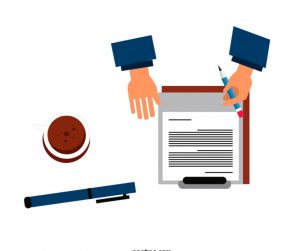How To Write A Debate: A debate is a serious conversation on a topic done at a public gathering or legislative assembly when opposing viewpoints are given and the discussion is usually ended with a vote. A debate is a formalized discussion.
Two opposed sides alternate speaking in support and opposition to a specific point of dispute, which is frequently based on a topic. Unlike arguments with family or friends, each participant is given a set amount of time to speak, and interjections are strictly monitored. “Affirmative” speakers are those who agree with the subject, while “opposition” speakers are those who disagree.

Almost everyone has had to write an argument at some time in their lives, whether for an English lesson, as part of a group, or simply for fun. However, just because the majority of people have done it previously does not mean it is simple.
There are a plethora of things to think about: should you start by appealing to your audience’s emotions or go right to the point with cold hard facts? In your discussion, how many arguments should you include? Is it necessary to include a conclusion?
This article demonstrates how to easily organize and compose a debate to help you limit and reduce ambiguity.
Recommended: How to Start a Debate By Introducing yourself
Debate Writing Essentials
A debate must have a proposition, a topic, or a problem, and speakers must talk for or against it. As a result, each point should be carefully picked, taking into account both the benefits and cons of the topic at hand.
To make the ideas clear in one’s mind, an outline of the essential issues should be created in the order in which one would argue. Because a speaker’s time is frequently limited, the points should be concise and instructive. Every issue/subject has its own vocabulary, which must be carefully selected in order to prevent unwanted pauses in the argument due to a lack of words to communicate views on the spot.
The speaker addresses the chair makes an argument, ‘appeals‘ for empathetic comprehension and support, attacks the opponent’s position, and asserts the argument.

Also see: How to speak in Public without fear or anxiety
What Are The Various Types Of Debate?
1. Cross-Examination Debate: This is a contemporary form of college debate in which two people compete against one other. These debates are meant to be values-based and to concentrate on the most important aspects of a contentious subject. While precise approaches differ, Cross-Examination Debate favors extensive use of evidence and an emphasis on the topic rather than delivery.
2. Lincoln-Douglas Debate: It is a one-on-one argument in which logic, ethical ideals, and philosophy are heavily emphasized. The Lincoln-Douglas Debate is a sort of high school debate in the United States. It is also known as LD Debate or just LD, and it is used in tournaments such as the National Forensic League.
Five speeches and two rounds of cross-examination make up an L-D debate session. The Lincoln-Douglas Debates, which took place between Abraham Lincoln and Stephen A. Douglas in 1858, are commemorated by the initials LD. Their arguments revolved around slavery, its morality, ideals, and logic.
Also see: Differences Between Interpersonal and intrapersonal communication
3. Academic Debate: Academic debate is an excellent way to strengthen your academic skills while also learning about new topics. Many different speeches, such as Lincoln Douglas’, might be utilized as a template.
Debate competition teaches students how to defend their point of view in front of others. Also, work on your writing and thinking skills.
4. Parliamentary Debate: In most regions of the world, these are the most prevalent types of debates. The practice differs from country to country. Although it is called a Parliamentary debate, it is not a debate held in a government legislature. These are called after the discussions that take place in the British parliament.
5. Spontaneous Debate: These debates, also known as SPAR, are frequently held in college and university classrooms. In these debates, two debaters pick a topic at random. Before engaging in a brief discussion on the topic, the debaters spend a few minutes preparing what they will say. These disputes are more concerned with presentation and style than with topic because they do not need much study.
Also see: Advantages and Disadvantages of being a leader
6. NDT Debate: NDT stands for National Debate Tournament. Tournament debate is one of the oldest and most popular types of debate at the collegiate level. The emphasis in this type of debate is on providing vast volumes of data as rapidly and as logically as possible.
Recommended: Causes, Effects and Solutions to Low Self-esteem
9 Steps to Write An Excellent Debate
1. A Strong Start: A great opening statement is the foundation of any excellent dissension. When dealing with something emotionally charged, such as debate themes, starting with an emotionally charged introduction is the best way to go.

For example, if you were advocating for your nation to accept more migrants, an opening phrase maybe, “Have you ever imagined how it might feel to be forced to leave your home? To be so afraid of violence or other forms of persecution that you and your family must flee your home and migrate to a new country?”
It’s equally as effective to start your dissension with a compelling statistic. If your topic isn’t overly emotive, using a shocking or alarming statistic as your first line might nevertheless convey emotion. You should try to get your audience and judge to sit up taller in their seats.
2. Describing The Topic: Following your beginning, you must make the topic you’re discussing very obvious to your audience. Declare your issue as well as your team’s viewpoint on it. Make sure your topic’s keywords are defined. This doesn’t have to be an exact dictionary definition; alternatively, it might be your understanding of the word in the context of the discussion or scenario.

While this may appear tedious, it is necessary to ensure that you and your opponent are on the same page. Debating someone who has a different interpretation of the issue than you is extremely difficult. If you’re not the first speaker in the discussion, you should use this time to either agree with or disagree with your opponent’s description.
Recommended: Steps to draft an Excellent Affidavit
3. Titling or Signposting: Signposting may appear to be inconvenient and unneeded. It can even appear to impede the flow of your otherwise smooth and lyrical speech if you’re a word fanatic. However, it is very essential in the framework of a good discussion.
You may believe you’ve written the greatest and most straightforward debate in the world, but the audience isn’t you. They aren’t as knowledgeable about the subject as you are, and they aren’t nearly as committed to the discussion as you are.
During the introduction, they may zone out for a few seconds before becoming fully disoriented. This is why signposting is so essential; it’s a quick and easy approach to remind your audience what you’re talking about and where you’re at in your speech.
Add a few phrases at the conclusion of your introduction to notify the listener how many points you’ll be making and in what sequence you’ll be delivering them.
You might state at the outset of each argument to remind the audience of what you’re talking about. While this may appear simple and as if you anticipate the audience to fall asleep on you, it is actually quite important and makes your discussion simpler to follow.
Recommended: Most difficult examination in the world 2022
4. Rebuttal: Sometimes the best attack is a solid defense, as the saying goes. If you’ve ever watched a professional debate, you’ll know that the most exciting portion is generally when one side takes one of the opposing side’s arguments and rips it apart.
While entertaining to watch, it is also the hardest aspect of any discussion to master. Rebutting arguments requires you to think on your feet. You have just thirty seconds to deliver a compelling counter-argument to one that your opponent has undoubtedly spent hours studying and polishing. Fortunately, there are several tactics you may do while rebutting to make the task seem less intimidating.
5. Make Pre-research: If you’ve decided on a discussion topic before the debate, time is your most valuable commodity. Use it. Put yourself in your opponent’s position after you’ve created your own arguments and try to predict what arguments they’ll employ.

Also see: Reasons Why Most Businesses Fail
6. Identify The Point: If your opponent is arguing for a change, there is one essential topic you may focus on while rebutting them. If your opponent is calling for a complex shift in government policy or social philosophy but has failed to articulate the benefits of the proposed change, here is your chance to strike.
Bringing up economic issues is extremely beneficial since it can be applied to almost any argument topic. Any discussion on social justice, a topical issue, a government policy, or something utterly out of the ordinary will have an economic component.
7. Make Your Own Claims: A simple but powerful technique to create a defense against your own case is to twist your own reasoning to refute an opponent’s claim. Of course, going too far and reciting your entire planned argument is a terrible error. However, you may break down the body of your speech into different parts to counter your opponent.
Bringing up economic issues is extremely beneficial since it can be applied to almost any argument topic. Any discussion on social justice, a topical issue, a government policy, or something utterly out of the ordinary will have an economic component.
Recommended: How to be a good conversationalist
8. The Body: Writing a body paragraph for an essay is essentially identical to writing an argument for a debate. Each argument should begin with signposting, followed by a one-sentence explanation of your case.

After that, you should expand on your point a little, provide some facts and statistics to back up your claims, and then neatly link back to the debate’s topic so the audience understands that you’re not just delivering a passionate rant, but rather a carefully calculated point that ties in with a general thesis statement.
In most debates, having three arguments is the best strategy to keep your speech running long enough. If you have a clearly weaker argument, attempt to wedge it between two stronger ones.
9. Collecting Proof: If your issue necessitates the use of statistics and specialists at every step, you must ensure that you are doing everything appropriately.
When you use the appropriate evidence in your dispute, you become more credible, but when you use the wrong sort of information from the wrong sources, you leave yourself up to criticism from the adversary.
The first step in locating appropriate evidence to quote is to examine the source. Second, ensure sure the information or figure is current. Your proof is the foundation of your argument; if it isn’t solid enough, everything will fall apart.
Recommended: Countries with the Lowest crime rate 2022
Summary
It brings together the arguments you’ve made in the body of your essay and delivers a message that should leave the reader feeling informed. Writing an argument ending is one of the most significant, as well as one of the most fundamental, aspects of your speech.
Now it’s just a matter of expressing yourself. If you’re the last person to speak in a group discussion, make sure your conclusion addresses the most severe issues expressed by your peers.
Conclusion
Writing a debate might be difficult or tedious, but it can also be gratifying since it expands your understanding, fosters critical thinking, and sharpens your persuasive skills. However, in order to be effective, you must know how to write for a discussion. The preceding instructions will assist you in comprehending the debate speech writing process. A good debate involves a combination of subject knowledge, reasoning ability, and the ability to articulate the proper attitude.

Edeh Samuel Chukwuemeka, ACMC, is a lawyer and a certified mediator/conciliator in Nigeria. He is also a developer with knowledge in various programming languages. Samuel is determined to leverage his skills in technology, SEO, and legal practice to revolutionize the legal profession worldwide by creating web and mobile applications that simplify legal research. Sam is also passionate about educating and providing valuable information to people.